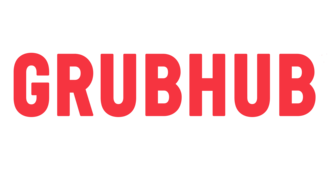
news
Why Grubhub is Outlasting Food Delivery Startups

Earlier this year, Grubhub’s future looked bleak.
The parent company of Seamless, and America’s most popular takeout service, Grubhub was under siege by dozens of delivery startups. Venture capitalists poured $5.6 billion into food delivery in 2015—$2 billion of that in the fourth quarter alone. These new and richly funded competitors were luring in customers with steep discounts and generous sign-up credits. At Grubhub, meanwhile, revenue and user growth had been slowing since the company’s April 2014 IPO.
Investors were rattled. On Jan. 28, Grubhub’s stock fell to $18.34, an all-time low. Over the next few months, several analysts cut their ratings.
Fast-forward to today and the dining tables have turned. Funding to food delivery startups tumbled in the first two quarters of 2016, triggering a global shakeout. California-based SpoonRocket shut down in March, India’s Tiny Owl in May, Belgium’s Take Eat Easy in July. Last month, Takeaway.com sold its British business to Just Eats, and Foodpanda is reportedly looking to unload its operations in Indonesia. Since 2013, at least 25 food delivery companies have failed, according to data tracked by venture-capital research firm CB Insights. Even the wealthiest startups can’t hide the strain: DoorDash in March sold shares at a 16% discount to its funding from a year earlier, and Postmates is misleading its customers about prices.
Now look at Grubhub. The company’s share price has rebounded to more than $40 and its revenue growth reaccelerated in the quarter ended June 30. Gross food sales and “daily average grubs”—Grubhub’s quirky term for the average number of revenue-generating orders in a day—have risen quarter-over-quarter since last summer. Quarterly profit is at $12.8 million, an all-time high.
For all the Tuesday night takeout “disruption” promised by food delivery startups, a few years into the game it’s Grubhub that looks like the clear winner. Yes, companies like Postmates and DoorDash have claimed some of the market, but those gains have been largely fueled by discounts and subsidies. With funding from investors harder to come by, it’s an open question whether these startups will be able to continue providing a service that can rival Grubhub in speed, reliability, and convenience at a competitive price.
Unlike most of its competitors, Grubhub’s core business isn’t the messy logistics of food delivery. Instead, the company is a middleman, aggregating orders from diners and sending them to more than 40,000 restaurants across the US in exchange for a commission. Here, Grubhub’s sheer scale has made it dominant. A June report from Morgan Stanley found Grubhub was five times the size of its largest food-delivery competitor (Eat24) in terms of gross sales. Third-party analysis provided to Quartz by e-commerce research firm Slice Intelligence shows that while Grubhub has slowly lost market share to competitors over the past year, its overall lead remains substantial.
Grubhub and Seamless, which it acquired in 2013, also have more dedicated users than their competitors. According to Slice Intelligence research, 23% of Grubhub’s customers are considered “heavy” users, meaning they have ordered from the service 10 or more times. That’s a couple percentage points better than Postmates or DoorDash. On Seamless, a staple of late-night corporate employees in New York City, 48% of customers fall into the “heavy” user category.
Upstarts like DoorDash and Postmates may have more new users coming in the door, but in a low-margin business like food delivery what matters is customer retention. “It’s not hard to create an ordering platform with good pictures of food and a ‘Seamless’ experience,” says Adam Price, CEO of Homer Logistics, a merchant-facing delivery startup based in New York. “The challenge is converting all the consumer behavior entrenched in Seamless. That’s a huge marketing experience over years.”
Grubhub is now facing competition from even bigger tech companies. Deep-pocketed Amazon is slowly adding free one-hour delivery from popular restaurants as a benefit for US members of its signature Prime program. Uber, which is sitting on billions of dollars in cash, is investing heavily in a food-delivery operation called UberEats. Where startups like Postmates and DoorDash rushed to expand as quickly as possible—sometimes angering unsuspecting restaurants in the process—Amazon and Uber are taking a more methodical and Grubhub-like approach.
“You can’t do this without having partnerships in place with restaurants,” says Grubhub CEO Matt Maloney. “You have poor efficiency, you have poor economics, you have poor satisfaction. It doesn’t work. So, going out there and contracting restaurants is what you have to do, and frankly that is what Uber and Amazon are doing because they recognize you can’t do it any other way.”
Down the line, Uber and Amazon could spell a more serious threat to Grubhub’s existence. But for now the incumbent is still going strong while the disrupters crash and consolidate around it.
Article written by Alison Griswold, Quartz.